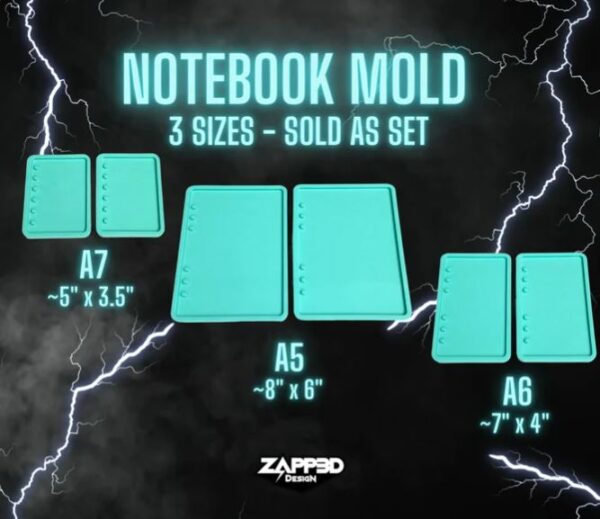7 Best Resin Book Cover Molds | Make DIY Books!
Welcome to the world of DIY book cover crafting! If you’re into customizing your book covers, we’ve got just the thing for you – the best resin book molds out there.
This list of resin book molds are for pro’s and newbie resin crafters. These molds are designed to help you create unique book covers effortlessly.
You can make different types of books with these resin book molds like resin journal covers & notebooks that have inclusions like dried flowers and other elements.

These are the tools you need to turn your ideas into tangible, standout book covers. Let’s dive into the top resin molds that’ll take your bookbinding projects to the next level.
And when you need some more inspiration on what you can make with resin, here are some of the most creative resin ideas to make.
BEST RESIN BOOK COVER MOLDS
1. Leobro Silicone Notebook Cover

2. Dragon Eye Resin Book Cover

3. NiArt Book Cover

4. Tomorotec set of 2 book covers

5. Happy Kawaii Supplies Book Cover Molds

6. Set of 3 Resin Book Covers

7. Willbond Resin Book Cover Kit

Book Cover Ideas
When delving into the art of crafting resin book covers, the possibilities for inclusions are as vast as your imagination.
Embedding elements such as dried flowers, metallic foils, or even small trinkets within the resin can add a unique and personalized touch to your covers.
Experimenting with different textures, colors, and shapes allows you to tailor each cover to the essence of the book it envelops.
Consider incorporating layers or gradients for a dynamic visual impact, and don’t shy away from mixing materials like glitter or small beads for added depth.
If aiming for a vintage vibe, aged paper, or parchment-like inclusions can evoke a sense of timeless charm.
Are you new to resin? Read our guide on resin for beginners and how to use epoxy resin before starting.
Tips For Using Silicone Book Molds
1. Proper Mold Preparation
Before pouring any resin, make sure your silicone mold is clean and free of dust or debris. This step ensures that your resin book covers come out smoothly and with all the intricate details preserved.
If you are having a problem with resin sticking we have an article with ways to get resin out of molds. Also, here are some of the top surfaces that resin will not stick to.
2. Use the Right Type of Resin
Different silicone molds may react differently to various types of resin. Be sure to choose a resin that is compatible with silicone molds.
Epoxy resin is a popular choice for many projects, as it creates clear, durable results. Read the manufacturer’s instructions for both the silicone mold and the resin to make sure they will work together. Here’s our list of the best resin for crafts.
3. Measure and Mix Resin Accurately
Achieving the right resin consistency is crucial for successful casting. Follow the recommended mixing ratios provided by the resin manufacturer meticulously.
Use measuring tools so that you mix the resin right. Inadequate mixing can lead to incomplete curing or uneven results, affecting the quality of your book covers.
4. Eliminate Air Bubbles
To avoid unsightly air bubbles in your resin book covers, thoroughly mix the resin and then pour it into the mold slowly.
You can also use a heat gun or a torch to carefully remove any air bubbles that rise to the surface.

Alternatively, tapping the mold gently on a flat surface can help release trapped air. Taking the time to eliminate bubbles will give you a better looking finish.
See our article: how to get rid of resin bubbles
5. Patience During Curing
After pouring the resin into the silicone mold, be patient during the curing process. Follow the recommended curing time specified by the resin manufacturer.
Avoid demolding too early, as this could wreck the shape of your book cover.
Once fully cured, carefully remove the resin book cover from the mold, taking your time to preserve the details.
In Closing: We appreciate you taking the time to explore resin book cover molds with us.
Crafting your own book covers can be a fulfilling and imaginative journey, and we hope this list of the best molds have sparked your creativity!
Thank you for being a part of this creative exploration with us. Happy crafting, and here’s to many more personalized literary treasures!


![9 Best Resins For Stabilizing Wood [2025]](https://craftydiyartistry.com/wp-content/uploads/2023/11/resin-for-wood-stabilizing-1b-600x499.jpg)



